Introduction to the flavor characteristics of Brazilian Kaduai and Kaddura coffee half-sun treatment Kaduai nuts are sweet

Professional coffee knowledge exchange more coffee bean information please follow the coffee workshop (Wechat official account cafe_style)
Qianjie, Brazil's Kaduai, still uses Brazil's most traditional treatment, half-sun treatment. On the other hand, this half-sun Kaduai has the acidity of lemon and the acidity of berries, which is very different from the Brazilian coffee, but at the same time retains the nutty aroma and sweetness of Brazil, with a touch of freshness. The overall feeling is as bright and fresh as fruit aroma, with a balanced taste, such as fruit cream biscuits in the mouth.
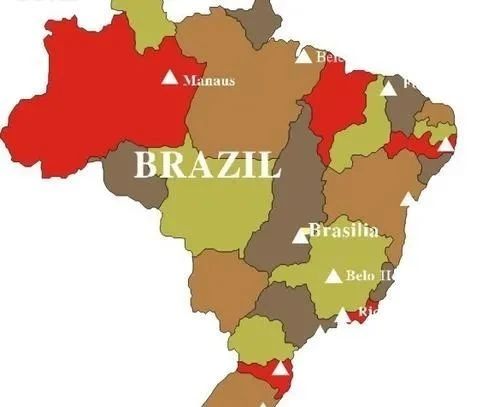
Brazil is the world's largest coffee producer, coffee is mostly produced in the plain or plateau savanna climate zone, the average annual temperature is about 20 ℃, excellent climate and most flat geographical conditions can be large-scale coffee planting in Brazil, and the use of machinery to harvest coffee fruits, it is conceivable that the output is amazing.
01 | Coffee history
Brazilian coffee was introduced to Brazil from French Guiana in the 1720s, from a Portuguese captain, Francesco? Paletta, who captured the heart of the then governor's wife in Cayenne, the capital of French Guinea, successfully brought coffee seeds to Brazil. Since then, coffee has adapted rapidly in Brazil, spreading from the north to the southeastern state of Sao Paulo. By 1845, Brazilian coffee beans accounted for 45% of the world's coffee beans and became the main source of income in the state of Sao Paulo.
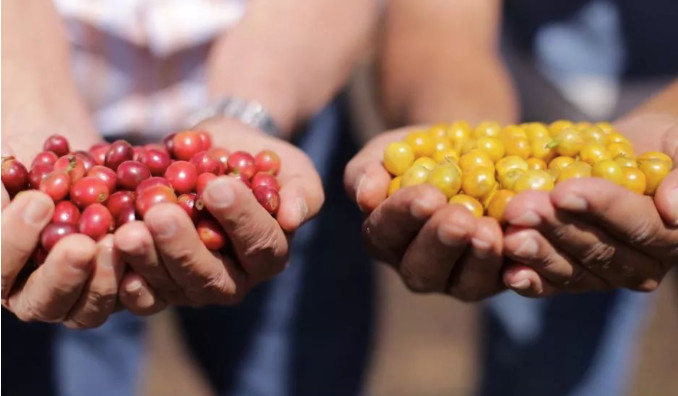
02 | Flavor of Brazilian beans
The altitude of Brazilian coffee is about 400-1600 meters above sea level, and the altitude is relatively low. Compared with Central American coffee, the density of Brazilian coffee beans is not particularly high. As a result, the taste of Brazilian coffee is not as good as that from many high altitude producing areas, and the coffee flavor is monotonous. Brazilian coffee taste supple, balanced, nutty, grass, chocolate, not too much sour and bitter taste So it is often used to make spaghetti blends, but coastal Rio coffee even has iodine and salty taste, which is thought to be the result of some kind of microbial action, but even if planted in the same soil, it does not necessarily produce this flavor every year.
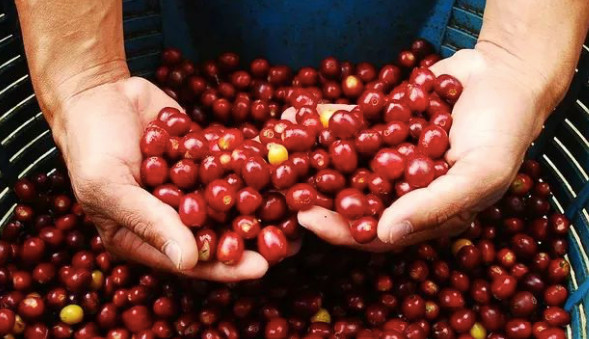
03 | breed
There are many varieties of coffee grown in Brazil, with red bourbon, yellow bourbon, New World and Kaduai as the main varieties. Kaddura, Akaia, Obata, Alamosa, pointed body bourbon and so on have also been planted and studied.
Kaddura is a variety of bourbon, was found in Brazil in 1937, production capacity and disease resistance are better than bourbon, and the tree is shorter, easy to harvest, strong adaptability, no shade trees, suitable for planting in the high elevation area of 700m to 1700 meters, the altitude adaptability is very strong, but the higher the altitude, the better the flavor, and the production capacity is relatively reduced.
04 | Coffee producing area
Brazil has 21 states and 17 states produce coffee, but seven of them produce the most, accounting for 98% of the country's total output.
The seven states are: Sao Paulo (Mogiana, Centro-Oeste), Parana (Norte Pionerio do Paran á), Bahia (Planaltoda Bahia, Cerrado da Bahia, Atlantico Baiano), Esp í rito Santo, Conilon Capixaba), Minas Gerais (Sul de Minas, Cerrado Mineiro, Chapada de Minas, Matas de Minas), Rond?nia (Rond?nia) and Rio de Janeiro (Rio de Janeiro).
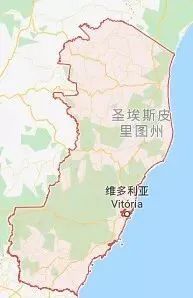
Kaduai, state of Espiritu Santo, Brazil
All at 1100-1200 m above sea level, the state of Esp í rito Santo is mainly divided into two areas, with robusta beans grown in both large and small estates in the north, while Arabica coffee is grown in the south, which is less common. For a long time, Brazil has used solarization as the main treatment. Due to limited water resources, water washing can not support a large amount of coffee production. Since 1990, Brazil has advocated half-sun (or semi-washing), that is, after removing defects and floating fruits through the sink, the peel and pulp and part of the pectin are removed by machine, washed, dried or dried in a drying room. Compared with the water washing method, the half-sun method saves water and labor, which has greatly improved the quality of Brazilian coffee, reversing the bad criticism of Brazilian coffee after years of rough sun exposure.
Kaduai is a dwarf coffee tree produced in 1950 in Brazil with a hybrid of yellow Kadura and Mundo Novo Mondonovu (New World). It can adapt well at various elevations and will perform better in the cup when planted above 800m, with two types of red and yellow. Bourbon species, the second species caused by the Typica mutation, belong to the oldest existing coffee variety. The green fruit will appear bright red when ripe, and the bourbon species at high altitude usually have better aroma and bright acidity. According to the color of the fruit, it can be divided into red bourbon, yellow bourbon, orange bourbon, pink bourbon, yellow bourbon, but the yield is relatively low, but the quality is better.
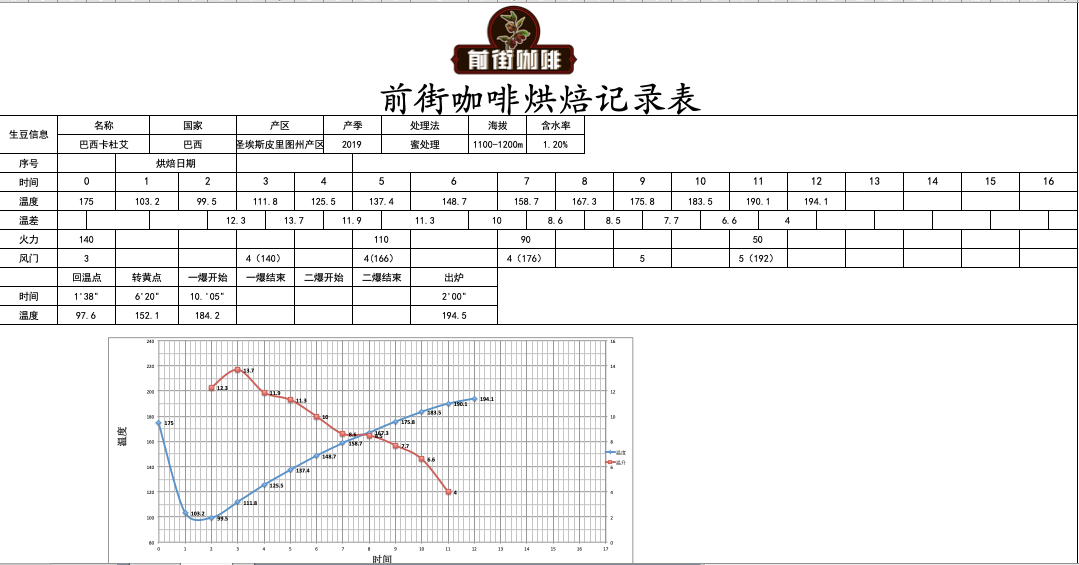
Brazil Kaduai baking curve
The furnace temperature is 175 ℃ and the firepower is 140. the throttle is opened to 4 when the furnace temperature is 175℃ and the firepower is 1100.The throttle remains unchanged when the furnace temperature rises to 176℃ and the firepower is adjusted to 90. When the furnace temperature rises to 192 ℃, the firepower is adjusted to 50, and the throttle is 5.9 times 39 investors 38 ", ugly wrinkles and black stripes appear on the bean surface, and the smell of toast obviously turns into coffee, which can be defined as a prelude to an explosion. At this time, you should listen carefully to the sound of an explosion point, start to explode to 10 minutes, open the throttle to 5, and develop 2 hundred" after an explosion, 194.5 ℃ into the pot.
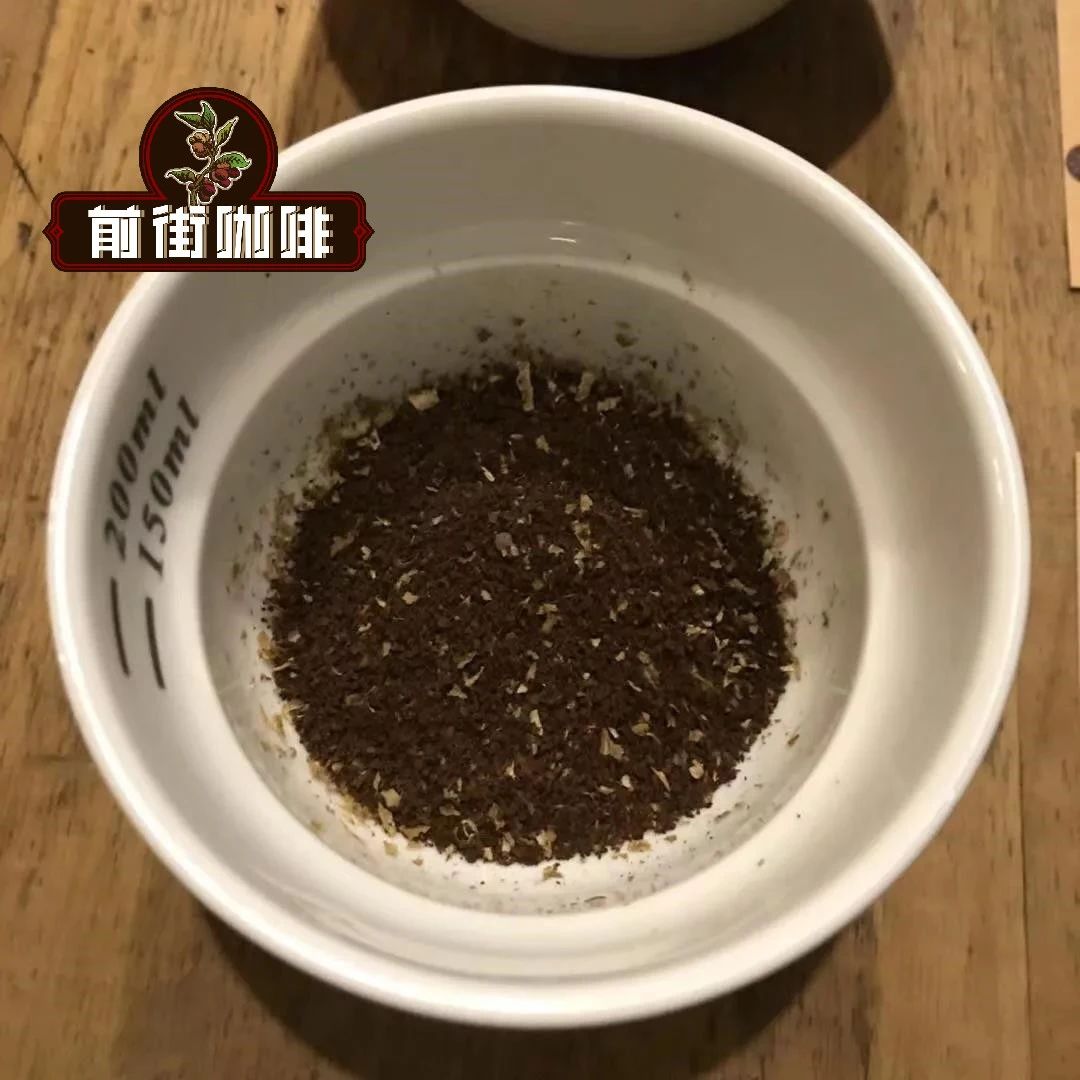
Cup test
Brazil Kaduai: the wet fragrance has a spicy aroma, sipping citric acid, berries, herbs, caramel, nuts, acidity as a whole to show clarity and clean taste.
Kaduai, state of Espiritu Santo, Brazil
Producing area: Espiritu Santo
Variety: Kaduai
Altitude: 1100m
Treatment: semi-washing
Flavor description: full-bodied citric acid, fruit flavor, heavy aroma, balanced taste, bright acidity
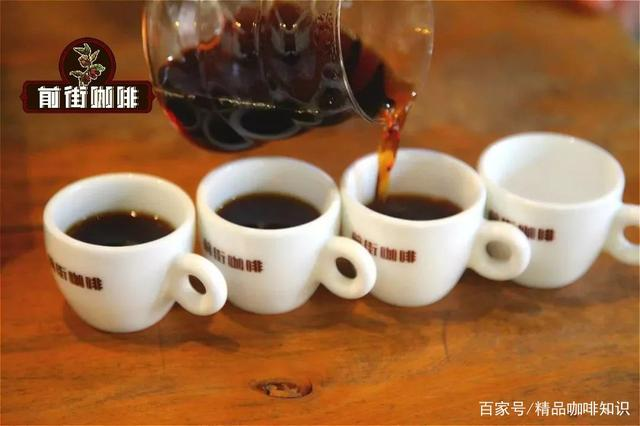
Important Notice :
前街咖啡 FrontStreet Coffee has moved to new addredd:
FrontStreet Coffee Address: 315,Donghua East Road,GuangZhou
Tel:020 38364473
- Prev
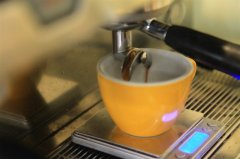
What are the standard courses of the European Fine Coffee Association? Does China have scae International Coffee Certificate?
Professional coffee knowledge exchange more coffee bean information please follow the coffee workshop (Wechat official account cafe_style) European Fine Coffee Association license course: ● extraction and Grinding Certification (Gold Cup) Primary (5point) ● extraction and Grinding Certification (Gold Cup) Intermediate (10point) ● * basic Coffee knowledge course (10point) syllabus: 1. The life history of the seed
- Next
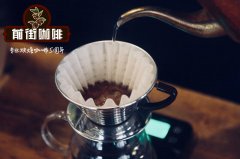
Introduction of Yellow Bourbon with Pulp and hand-brewed Coffee in Ipanema Manor, Brazil
Professional coffee knowledge exchange more coffee bean information please follow the coffee workshop (Wechat official account cafe_style) Brazil Ipanema Manor Yellow Bourbon selection with pulp sunburn country: Brazil: South Minas province altitude 1100m treatment: pulp sunburn variety: yellow bourbon flavor description: detailed and rich hazelnut, drupe, Irish cream flavor, in the belt
Related
- Detailed explanation of Jadeite planting Land in Panamanian Jadeite Manor introduction to the grading system of Jadeite competitive bidding, Red bid, Green bid and Rose Summer
- Story of Coffee planting in Brenka region of Costa Rica Stonehenge Manor anaerobic heavy honey treatment of flavor mouth
- What's on the barrel of Blue Mountain Coffee beans?
- Can American coffee also pull flowers? How to use hot American style to pull out a good-looking pattern?
- Can you make a cold extract with coffee beans? What is the right proportion for cold-extracted coffee formula?
- Indonesian PWN Gold Mandrine Coffee Origin Features Flavor How to Chong? Mandolin coffee is American.
- A brief introduction to the flavor characteristics of Brazilian yellow bourbon coffee beans
- What is the effect of different water quality on the flavor of cold-extracted coffee? What kind of water is best for brewing coffee?
- Why do you think of Rose Summer whenever you mention Panamanian coffee?
- Introduction to the characteristics of authentic blue mountain coffee bean producing areas? What is the CIB Coffee Authority in Jamaica?

